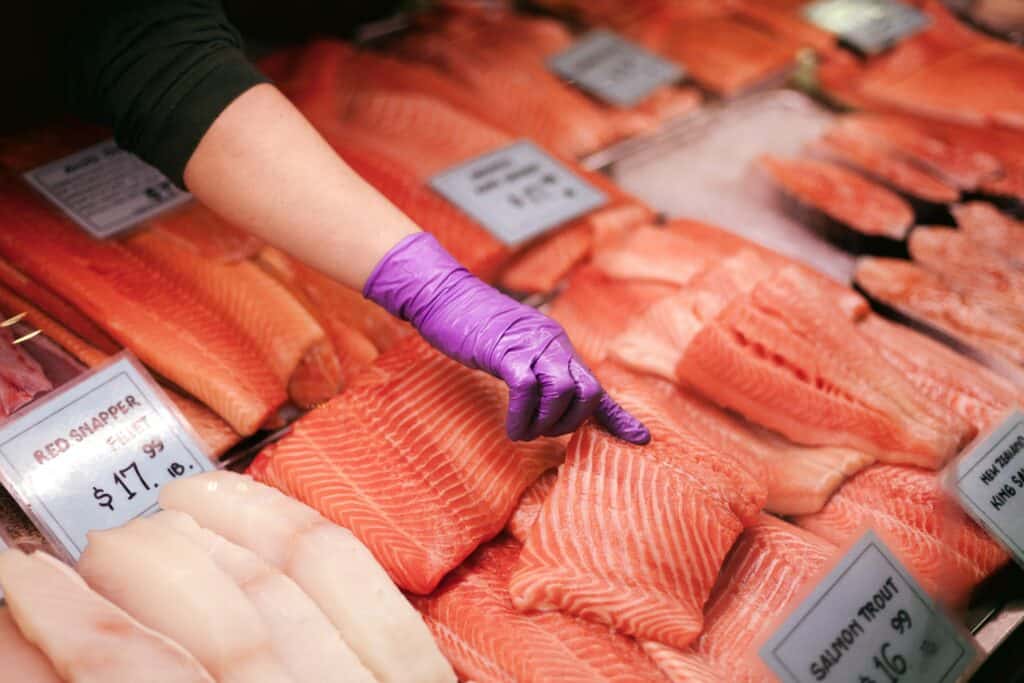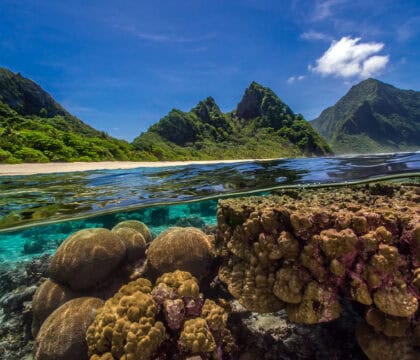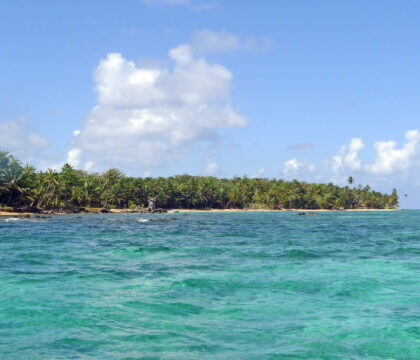May 30, 2025 • Blue Habits Tips, Resources
Our ocean sustains life on Earth—it feeds us, gives us half the oxygen we breathe, regulates our climate, and supports the livelihoods of more than 3 billion people. But right now, the ocean is under threat from pollution, overfishing, and climate change.
The good news? You can help. This World Oceans Day (June 8), we’re inviting you to take action from wherever you are. These 11 simple, science-backed actions are things you can do at home to protect the ocean—and they really work. You’ll be joining millions of others around the world who are taking steps, big and small, to build a healthier, more resilient ocean.
1. Choose Ocean-Friendly Seafood
Perhaps the single best thing you can do to support ocean conservation in your daily life is to learn to make sustainable seafood choices. Currently, 93% of wild fish populations are considered fully-fished or overfished, and the seafood industry has enormous impacts ranging from the bycatch of threatened species, like sea turtles, to pollution and even forced labor. But you have power in your purchasing decisions. By choosing seafood that’s caught or farmed using sustainable practices, you help protect marine life, reduce bycatch, and support responsible fisheries and fishing communities.

Seafood capture and farming have enormous impacts on our oceans. Learning to make responsible seafood choices is one of the best ways you can support healthier oceans in your daily life. © Colin Czerwinski
The best part? You’re not alone. Millions of people are already making more informed choices—and it’s easier than you think. Start by reviewing these 7 rules for choosing sustainable seafood, and bust common seafood myths that might be holding you back. Even reducing your seafood consumption, or choosing plant-based meals a few times a week, supports healthier oceans.
2. Cut Single-Use Plastics—Starting with One Item
Plastic makes up an estimated 80% of all marine debris, harming over 700 marine species and breaking down into microplastics that persist in the ocean—and our food. While the scale of the problem can feel overwhelming, individual actions do matter.

Plastic pollution in the ocean impacts sea turtles and other endangered wildlife. Taking steps to reduce your plastic use is a great way to support healthier oceans. © Ben J. Hicks / benjhicks.com
Start small. Focus on eliminating one single-use item this month—like plastic water bottles, grocery bags, or disposable cutlery. Then build from there. These 7 plastic-reducing tips can guide you. Research shows that when people see others taking action, they’re more likely to follow suit. That’s why your effort makes a bigger impact than you might think.
3. Be a Climate Hero in Everyday Life
The ocean absorbs more than 90% of excess heat from global warming and captures 25% of the carbon dioxide we emit. Rising temperatures are driving coral bleaching, shifting ocean currents, and reducing oxygen levels.
You don’t need to be perfect to make a difference. Even modest lifestyle changes—like switching to LED lights, walking or biking instead of driving, and cutting back on meat—can reduce your carbon footprint. Our guide to what you can do about climate change offers prioritized, actionable steps.

Rising temperatures are harming ocean health, including causing widespread coral bleaching. By joining the millions of people taking action to reduce their carbon footprint, you are making an important step toward supporting healthier oceans. © The Ocean Agency
Most importantly, remember: millions of people are already doing this. By joining them, you normalize climate-friendly living and help accelerate larger change.
4. Choose Ocean-Friendly Sun Protection
It’s estimated that 14,000 tons of sunscreen enter the ocean each year, and even trace amounts of certain sunscreen chemicals can cause coral bleaching, harm coral larvae, and impair fertility in fish.
Covering up or using reef-safe sunscreen, especially when you are in or near the ocean, is one of the easiest ways to support healthier oceans. Not only does sunscreen wash off in the ocean, washing off sunscreen in the shower can also carry harmful chemicals into waterways. By switching to reef-safe sunscreen, you help reduce chemical runoff and support healthier oceans.
Look for mineral-based options using non-nano zinc oxide or titanium dioxide, and avoid oxybenzone, octinoxate, and other harmful ingredients. You’ll protect your skin—and the ocean.
5. Say No to “Forever Chemicals” (PFAS)
PFAS (per- and polyfluoroalkyl substances) are a class of human-made chemicals found in non-stick pans, water-repellent clothing, and food packaging. These chemicals don’t break down in nature, and they’re accumulating in oceans, harming marine life and entering the food web.
You can take meaningful action by avoiding products labeled “stain-resistant,” “waterproof,” or “non-stick” unless they specify PFAS-free. Opt for stainless steel or cast iron cookware, and check cosmetics for PFAS-related ingredients. Learn more about how PFAS impact the ocean and support companies that are phasing them out.
Every purchase is a vote for a cleaner, safer ocean.
6. Vote With the Ocean in Mind
Government policy shapes the future of the ocean. Environmental protections, marine reserves, fishing regulations, and climate action all depend on elected leaders. But many voters don’t consider these issues when casting their ballot.
Make a habit of researching candidates’ positions on ocean and climate issues. Tools like the League of Conservation Voters’ Scorecards (in the U.S.) make it easy. Then vote—and talk about it! Encouraging just one friend or family member to vote can double your impact.
You don’t have to wait for an election—contacting representatives, signing petitions, and supporting ocean advocacy groups are powerful ways to stay involved.
7. Make Your Ocean Habits Visible
Behavior change spreads through social networks. When your friends, neighbors, or followers see you making ocean-friendly choices, it signals that those behaviors are normal, desirable, and doable.
Take a photo of your new reef-safe sunscreen or reusable bag. Post a sustainable seafood recipe. Share an article or tip that inspired you. It’s not about showing off—it’s about showing up. Visibility creates momentum, and small acts can spark big waves of change.
8. Watch What Goes Down the Drain
Most people don’t think twice about what they flush or pour down the drain. But household chemicals, pharmaceuticals, and microplastics can end up in rivers and eventually the ocean, where they harm fish, coral reefs, and other marine life.
Avoid flushing medications, use environmentally friendly cleaning products, and skip the microbeads in personal care products. Use a microplastic filter bag or laundry ball when washing synthetic clothes to capture plastic fibers and prevent them from entering the waste stream.
These actions are low-effort, high-impact, and help keep our waterways cleaner for everyone.
9. Stay Informed and Connect with a Community That Cares
Start by reading articles from trusted sources like Oceanic Society. Get started learning about ocean conservation issues here. People who learn more about ocean issues are more likely to adopt sustainable behaviors and influence others to do the same.
Connect with a like-minded community to stay inspired by signing up for our email newsletter and following us on Instagram or Facebook.
You don’t need to be an expert—just curious and engaged. That’s what sparks change.
🌊 Be the Wave
This World Oceans Day, take the pledge to act for the ocean—starting from home. These 9 steps are easy, effective, and already being done by people just like you.
Join the movement. Start a ripple. And help protect the ocean that protects us all.




